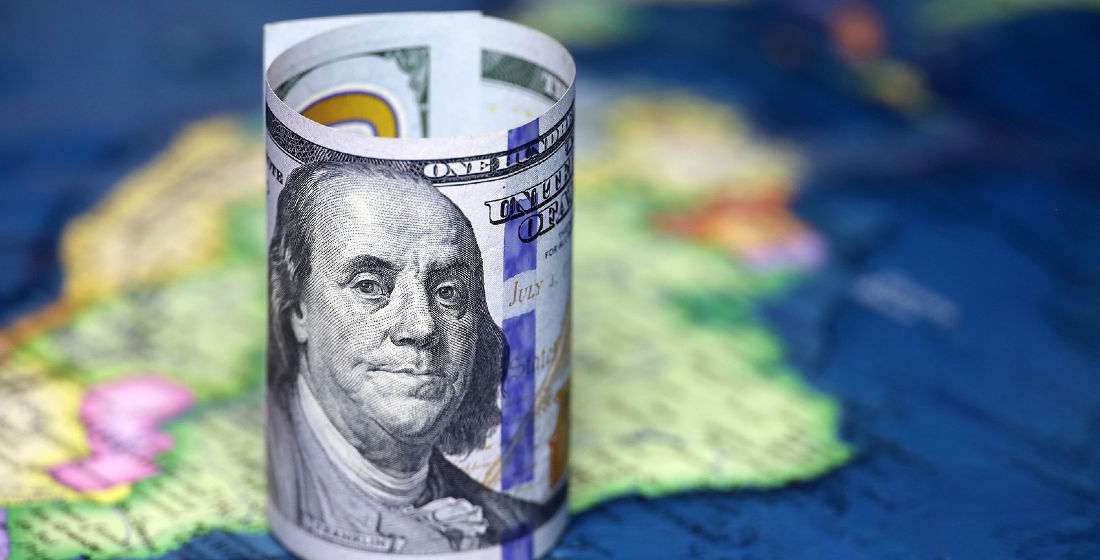Matching the tool to the job
Sovereign SLBs are attracting a lot of attention as a potential energy transition and distressed debt solution. But are they fit for purpose?

This week Brazil established an inter-ministerial committee to develop a framework for issuing sovereign sustainability-linked bonds (SLBs). No debut date has been set yet, but Brazil will likely follow the $2 billion and $1.5 billion global pathfinder deals placed by Chile and Uruguay respectively in 2022, with a deal of similar volume before the end of 2023.
There is a lot of expectation placed on sovereign SLB growth, particularly as a financial tool for energy transition in emerging and developing markets. But the benefits and drawbacks of SLBs versus green bonds continue to be debated – and conflated given the labels are often used very loosely in private sector deals.
Sovereigns have tended to opt for green bonds rather than SLBs because green bonds are normally project specific – the bond proceeds go to a single, sustainable purpose where a narrow set of KPIs have to be met and which do not preclude the borrower from raising non-green financing for other funding purposes.
But that flexibility means green bonds have little influence on a country’s overarching sustainability performance. They can also prove frustrating for Treasuries, which have to ring-fence the proceeds for a specific purpose.
There is also a lack of convergence between existing green bond industry standards issued by the International Capital Markets Association and the EU’s taxonomy for sustainable finance activities, which only recently became effective, or the EU’s voluntary green bond standard, which has not yet been finalised. So there is no guarantee for investors that their expectations of what constitutes a sustainable investment will align with sovereign green issuance.
SLBs overcome those issues – but concurrently, meeting their KPIs is significantly more challenging for sovereign issuers. Because sovereign SLB KPIs directly relate to a country delivering on its nationally determined emission cuts under the Paris Agreement, those KPIs have to be met at the national level rather than project level and require a much broader and deeper commitment from borrowers. For example, the step-up/step-down debt pricing mechanism in Uruguay’s deal makes meeting its Paris commitment (emissions cuts and renewables build-out) not just an environmental priority but a fiduciary issue given if it fails to do so the cost of debt on the SLB goes up by 25bp.
Just one tool of many
The reality is there is no one-size fits all solution – a green or blue bond, sovereign SLB and debt-for-nature swaps are all just tools in a growing sustainable finance toolkit. And for developed markets, sovereign SLB issuance will likely begin to balloon – arguably the fact that it hasn’t yet is a depressing symptom of the too slow acceleration to date of measures agreed in the Paris Agreement.
But the real problem is that other than debt-for-nature swaps – which are arguably now a proven tool for debt-distressed governments – none of these tools have major and easy application where they are most needed. Both Chile and Uruguay – the sovereign SLB pathfinders – are politically stable with low levels of debt. But for distressed debt economies – often those most likely to be hit by climate crisis – where the sovereign credit and political risk is very high, an SLB clause is unlikely to cut it with investors because of the depth of management required by the sovereign issuer of its overall economy to be able to meet its SLB KPIs. And given around 60% of low-income developing countries are already at high risk of, or are in debt distress, is the sovereign SLB instrument being over-hyped?
NatureFinance produced a report in March – Scaling Sustainability-linked Sovereign Debt – that gave estimates of the potential size of the sovereign SLB market whilst detailing the challenges.
“From the starting point of a mere $3.5 billion at the end of 2022, the issuance of sustainability-linked bonds from emerging market and developing economy (EMDE) sovereigns has the potential to reach between $250 billion and $400 billion by 2030.
“Coming off a low base, the volume of issuance has the potential to grow approximately 100-fold over this period, driven by an anticipated easing of the demand and supply constraints identified above. Under a baseline scenario, every sovereign with market access presently can be expected to issue at least two bonds during the seven-year forecast horizon.
“This performance would mirror the trajectory of the sovereign ESG debt issuance more broadly, which grew from under $1 billion in 2016 to over $120 billion of green, social, sustainable, and sustainability-linked (GSSS) bonds five years later.
“Under these projections, SLBs could make up between 6-9 % of the stock of EMDE external public debt estimated for 2030, or 11-18 % of bond debt. That compares to current levels for GSSS of 3% and 5.7%, respectively. The estimates are conservative given that they do not include the potential growth of local market or local currency SLBs, which remains in its infancy even for labelled bonds but shows significant promise. For example, Colombia, Fiji, and Nigeria have each issued domestic green bonds in the past five years.
“The potential for performance-based refinancing of external debt by sovereigns with limited or no market access is estimated at $40-80 billion. This covers 58 sovereigns currently rated at or below B+ and includes at least five in default at the time of writing – with total outstanding external debt totalling around $1 trillion. Of this, roughly two-thirds are held by private and bilateral creditors, and hence amenable to refinancing using SLBs. A crucial assumption here concerns the share of debt that is refinanced, which is assumed to be around 75% for sovereigns with less than $1 billion of external debt outstanding (e.g., Fiji, Grenada, Lesotho), but only 15% for those with a higher stock of debt.”
The Uxolo perspective
These estimates from NatureFinance do not seem illogical – but private sector SLB volume indicates they are ambitious. The key number – $250-$400 billion of EMDE sovereign SLBs by 2030 – contrasts starkly with SLB growth in the private sector. According to figures from Barclays, private sector SLB growth dropped by around a third to $60 billion in 2022 – Barclays had expected 2022 issuance of more than $200 billion.
Private sector SLBs work the same way as sovereign SLBs, tying corporates to company-wide environmental targets rather than specific projects. Arguably, the decline in volume is linked to concerns about the quality of SLB instruments. The step-ups in pricing for failure to hit environmental targets have been very small: Poland’s PKN Orlen became the first SLB issuer to pay a coupon step-up last year after its sustainability rating was downgraded by MSCI – the penalty was just a 10bp and 20bp rise on the two respective SLBs it had issued.
Coextensively, private sector SLB issuers have often got too little or no perceived pricing benefit from step-downs. In short, private sector SLBs are not doing what they say on the tin – neither for issuers (at least those not interested in a tinge of greenwash) or investors.
But there is a significant difference between private sector SLBs and the sovereign SLBs that have been done to date – unlike sovereigns where KPIs correlate to Paris Agreement targets, private sector corporations get to choose their own environmental objectives. Consequently, the appetite from investors for sovereign SLBs should be stronger (as Chile and Uruguay proved), albeit measuring whole-economy emissions is not an exact science.
Sovereign SLBs will very likely be a major topic of conversation at COP28. But expectations of the instrument are too high – even as an energy transition tool and certainly for distressed debt economies. No argument, they are a step in the right direction – but it is going to take much more than a single financial tool to generate the acceleration required to meet the financial requirements of impending global climate crisis. Keep the tool – expand the toolbox.





